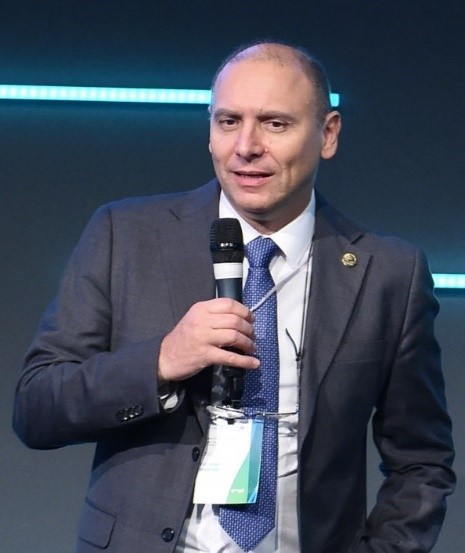
Shortly after the launch of the Green Powered Future Mission the Mission Innovation Secretariat was pleased to have a chat with its new Mission Director, Luciano Martini, to talk about the set-up and future plans of the Mission. In his day-job, Luciano is Director of the “T&D Technologies” Department at the Italian research institute RSE. He has more than 25 years’ experience in R&D and international cooperation in the area of renewable energy integration, applied superconductivity and smart grids.
1. What makes the Green Powered Future Mission stand out? Why do we need extraordinary international collaboration efforts to reach climate goals with the focus on power grids?
The Green Powered Future Mission relies on the direct commitment of MI members accounting for roughly 50% of global C02 emissions and electricity consumption, on the support of key international organizations and actors from the private sector, thus being best placed to catalyze bold actions and investments to develop innovative and affordable solutions for electric power systems around the world.
I am very glad to say that the Green Powered Future Mission is already up and running by leveraging on the legacy of MI’s Innovation Challenge on smart grids, which has a long track record of successful R&D collaborations and a well-established global network of clean energy innovation experts. But the new Mission must move one level up in order to reach the very ambitious goal of “Demonstrating power systems that are able to effectively integrate up to 100% variable renewable energies, like wind and solar, and maintain a cost-efficient, secure and resilient system by 2030.
As no single country can reach this goal on its own the three Mission co-leads from China, Italy and the UK are fully determined to build a strong coalition based on a truly public-private partnership as an effective and efficient way to bring together the resources and know-how that are needed for an impactful implementation of the Mission in both, developed and developing economies.
2. How will the world look in 2030 if the Green Powered Future Mission reaches its goals?
The clean energy transition is a challenging race and not only the goal but also the timing matters! By achieving the Green Powered Future Mission goal by 2030 we will heavily contribute to reach the deep decarbonization goals by further boosting the integration of extremely high shares of VRE share in the final electricity consumption, with many countries around the world able to run their power systems with up to 100% renewable penetration. This will be key in reaching the overall Paris Agreement goals on time. Moreover, the Green Powered Future Mission’s success will contribute to increase clean and affordable energy access in developing countries and remote areas thus fostering the achievements of the UN sustainable development goals.
3. What was the greatest challenge setting up the Mission?
The Mission’s themes are of primary importance for nearly every country and energy stakeholder globally, therefore it was not a difficult task to engage a broad coalition to participate in, and I believe more partners will join in the Mission shortly. Trends and challenges are global, nevertheless, innovative solutions to be implemented are local and may vary largely from country to country or even from region to region within the same country. Hence, the greatest challenge was converging different national interests and perspectives into a shared Mission goal.
4. What are the Mission’s plans for the near future?
The Mission is already fully operative and about 20 members gathered on June 18th for its official kick-off meeting, where participants agreed on the first actions to be taken. The first main effort will be the development of a Joint roadmap of global innovation priorities that will be presented at COP26 in November this year. By this document the Green Powered Future Mission really aims to identify the global top 100 R&I needs for the next decade to achieve the goal and will make sure the Mission will tackle them by developing and demonstrating innovative solutions to be implemented by public and private sector participants of the mission.